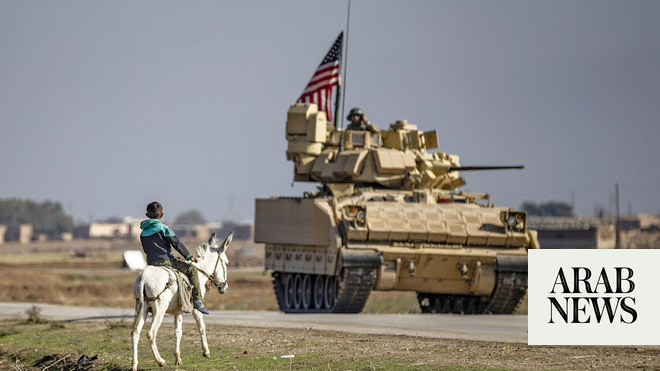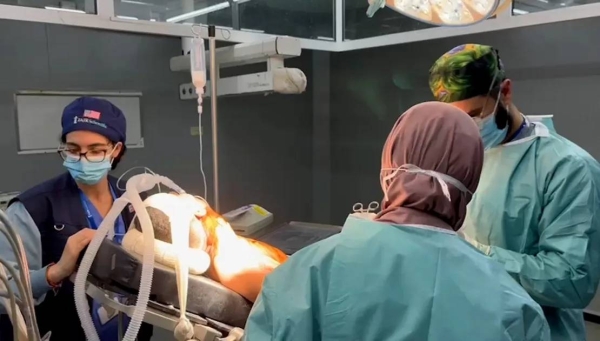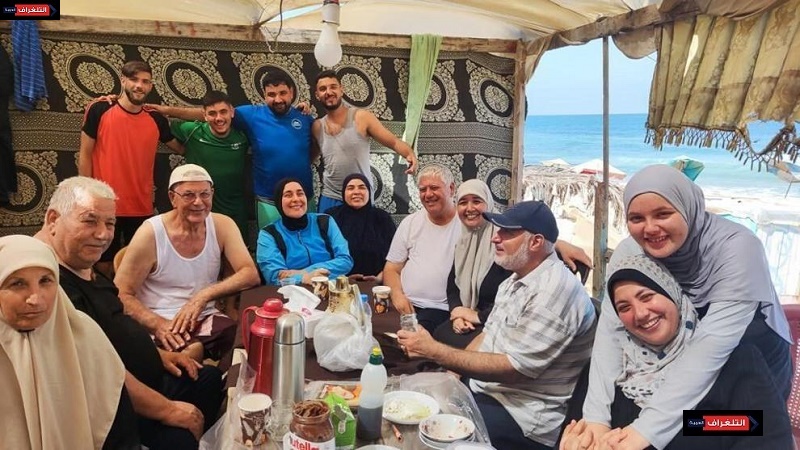
Family of 10, including nine children, stuck in region since father took them to join Daesh in 2016
Two older boys separated from the rest of the family have not seen their mother since 2019 and 2020, respectively
LONDON: The US government is attempting to extract a family of its citizens from a detention camp in Syria holding former members of Daesh, including children subjected to “violent” separation from their mother.
The family of 10, consisting of Brandy Salman and her nine children, are being held by the Kurdish Syrian Democratic Forces in the north of the country. Salman, 49, was taken with the children, currently aged between 6-25 years, to Syria by her Turkish husband in 2016 to join Daesh. He is believed to be dead.
The family was detained in Baghuz, Syria in 2019, and one of the male children, aged 17 at the time, was immediately separated from the rest of the family.
Salman’s sister, Rebecca Jean Harris, said that she had been contacted by FBI agents in 2019 seeking information on the family, after which Salman severed communications with her. Her father, Stephen R. Caravalho, told The New York Times that contact with Salman had been infrequent since she was taken into custody, and that the extended family had not seen her since 2006.
The US has so far repatriated 40 of its citizens from detention camps in northern Syria since 2016, including 25 children. A number of these were subsequently prosecuted by the authorities, but about 10,000 foreign nationals remain in the camps after the fall of Daesh’s territories in Syria and neighboring Iraq.
The SDF, a US regional ally despite not being an internationally recognized government, currently holds about 60,000 people in detention for Daesh affiliation, as well as an increasing number of children. Al-Hol, the largest camp, holds about 50,000 of these, with up to half of its detainees below the age of 12.
The militia does not keep accurate details on all those it has detained, with many Western governments reluctantly cooperating on identification, or outright refusing to allow the repatriation of their citizens.
So far this year, 2,500 people have been repatriated from SDF custody. In 2022, about 3,000 people were returned, more than in the three previous years combined, according to the US State Department.
The US has played a leading role in facilitating the repatriation of foreign nationals to other states. In August it flew 95 Kyrgyz women and children to their homeland, the NYT reported, but campaigners have criticized it for its slow response to returning some of its own citizens, including the Salman family.
Letta Tayler, a researcher at Human Rights Watch who has worked with members of the Salman family, told the NYT: “It’s great that the US is acting to take back this family, but why did it take so long given the horrific conditions that these US citizens were subjected to? That’s a question that deserves an answer from the US government.”
Ian Moss, a deputy coordinator for counterterrorism at the US State Department, told the NYT he had met Salman and five of her children in July, and that she had expressed a desire to return home.
“Whenever we find Americans (in detention in Syria), we work as fast as we can to get them out,” he said.
One of the Salman children, interviewed by Tayler and separately by UN Special Rapporteur on Counterterrorism and Human Rights Fionnuala Ni Aolain, said in his two accounts that the family was told by their father in 2016 that they were going camping. After a few days of traveling, he admitted that they had crossed from Turkiye into Syria, after which, the boy added, his mother had kept the children inside out of fear.
The boy, now aged 17, said after the family was arrested and his eldest brother separated from them, he was allowed to live with his mother and the other siblings in Al-Hol until 2020, when he was apprehended one day by guards in a marketplace area and eventually moved with a number of other teenage boys to the camp’s Houry center, which focuses on de-radicalising suspected young extremists.
In a video about children in Syrian detention camps released by HRW, the boy was featured with his identity obscured, in which he said: “It’s not only me. We a lot of kids (here), you know. No one wants to stay, just like growing up here doing nothing. That’s what we all feeling.”
Ni Aolain subsequently released a report on the forced separation of adolescent boys from their mothers in the camps, which said: “Every woman she spoke with identified the snatching and disappearance of their juvenile and adolescent boys as their main concern.”
It added that the removals were often “violent … causing them extreme anxiety, as well as mental and psychological suffering.”
In relation to the Salman boy, whose identity has been kept secret and who has only seen one sibling since his separation, Ni Aolain said that he expressed “great distress and worry” about only communicating with his mother through infrequent letters delivered via the Red Cross.
He had spent time in detention painting pictures of him reunited with his mother, and Ni Aolain said: “He seemed like a teenaged boy, except he happened to be a teenaged boy in this extraordinarily coercive and structurally abusive situation.”
SDF officials say that the removal of young men from the general population reduces the number of pregnancies and possible indoctrination of young men by older women who still adhere to Daesh’s beliefs. About 9,000 young men remain separated from the rest of the detainee population in Al-Hol and the smaller Al-Roj camp, about 2,000 of them foreign nationals.












